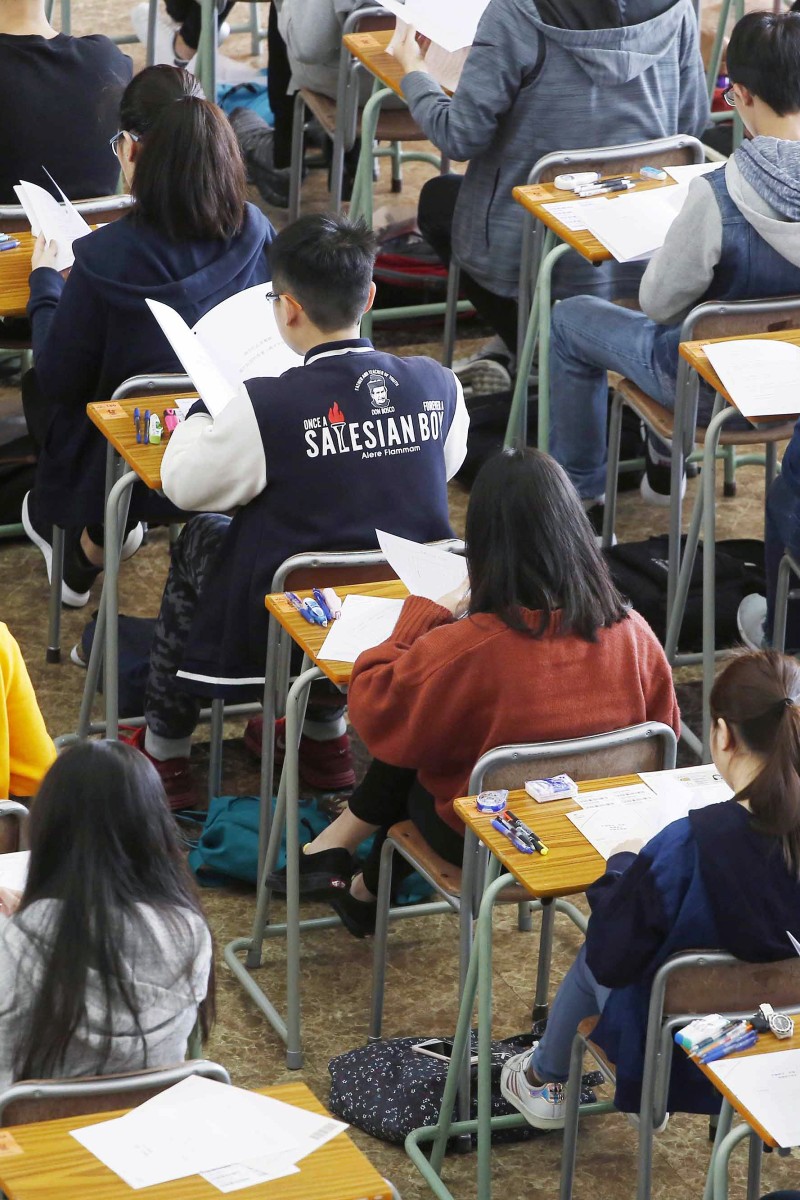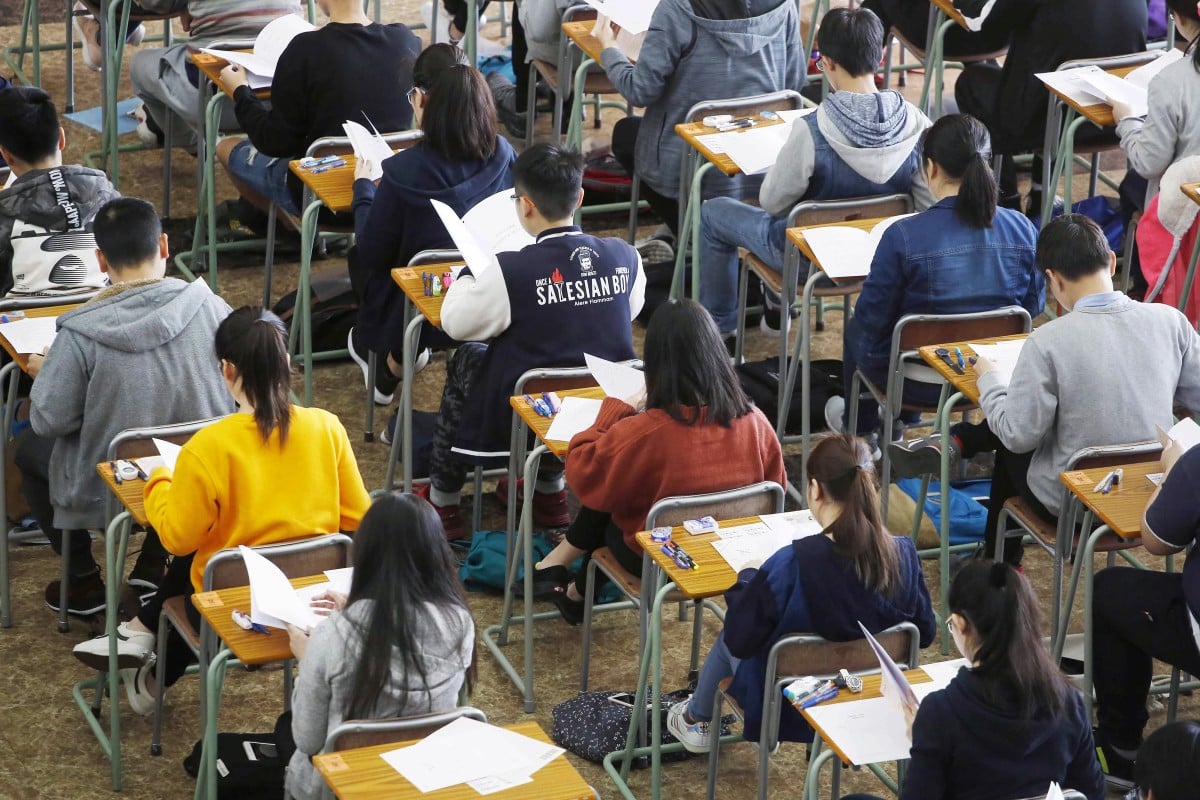
2018 DSE Maths exam was much harder than expected, with multiple choice questions the major hurdle
Many of the geometry questions also didn't include a diagram, so students had to visualise the problems themselves
 Some questions could not be solved with conventional means, which helps to distinguish the best candidates.
Some questions could not be solved with conventional means, which helps to distinguish the best candidates.Students faced a challenging HKDSE maths exam yesterday, with some saying the multiple choice paper was a lot harder than they had expected.
Dick Hui, a mathematics tutor at Modern Education, said the timing was tight, and students might not have been able to complete both papers in time. He also said the multiple choice questions on Paper Two were harder than in previous years, but that the long answer questions in Paper One were an average level of difficulty.
“Multiple choice questions with various difficulties were found in previous years as well, but this year the difference in difficulty level between questions was much higher,” Hui added. “It means students are likely to get a pass, but the exam was more demanding for students who are aiming for a 5* or 5**,” he said.
Hui also said there were many geometry questions that did not include visual diagrams, meaning students had to visualise the problems themselves.
Ken Tai, a mathematics tutor from Beacon College, agreed, and pointed out that a lot of questions tested students’ problem-solving ability.
“For instance, Q18 & 19 on Paper One required students to know the concepts of circles and centres of triangles. These topics, which are more often tested in Paper Two, were less straightforward and more demanding,” he said. Tai added that the wordings of these two questions was not common.
Hui noted that the last sub-questions of Q18 & 19 specifically examined students’ knowledge of circumcentre.
“For instance, Q19(b)(ii) required students to thoroughly understand the concepts of ‘circumcentre’ and ‘in-centre’. The question could only be solved if students were able to picture the diagrams described in the question,” he said.
Tai commented that Q19(b) in Paper One would distinguish the 5** students from the 5* ones, as “there were few guidelines, as opposed to previous years, for a question worthy of eight marks”.
Another challenging question, Hui added, was the last sub-question in Q17, which asked students to find the angle between two triangular planes.
“This question cannot be solved through conventional means. Students must first draw an extra line on the given diagram to resolve the problem.”
Leung Yuet-yee, 17, from Heep Yun School, said she was shocked by how difficult the papers were, and said she did not have time to complete Paper Two.
“In Paper Two I [had] to guess some of the answers instead of really calculating,” Yuet-yee said. “It [was] difficult. Solving the questions [was] very time consuming,” she added.
Tai explained it was because there were lots of geometric questions which would take up a lot of time.
Q19, especially, required students to be imaginative and thoughful, Hui said. It asked students to use their understanding of triangle characteristics to identify true or false statements about a pentagon with intersecting lines.
“Students had to actively deduce the similarities of the triangles using some of their calculated values, which was not suggested in the question,” Hui said.
Yuet-yee also said Q32 and 33 in Paper Two, which asked students to interpret graphs of several logarithmic equations, were especially difficult for her.
Her classmate, Yuen Chu-ki, 17, also found the paper difficult, and said she was not confident about getting a high score.
“More steps are required for each question [...] compared to past papers,” Chu-ki said. She added that this made it easy to make mistakes when completing some of the more difficult questions.
Hui advised students taking DSE in the future to familiarise themselves with the new topics added to the maths syllabus that have not been in former HKCEE exams. This year’s multiple choice questions required students to have in-depth knowledge of these new topics, Hui said.